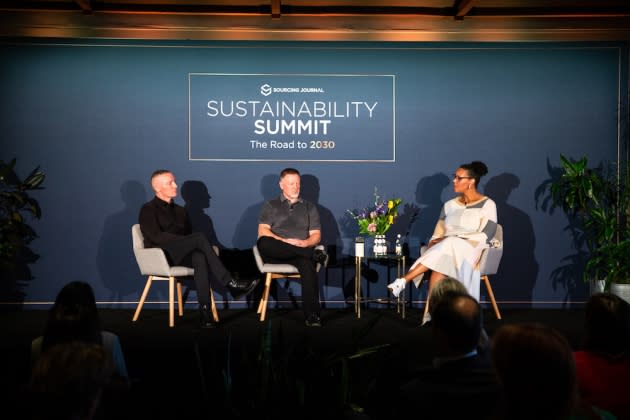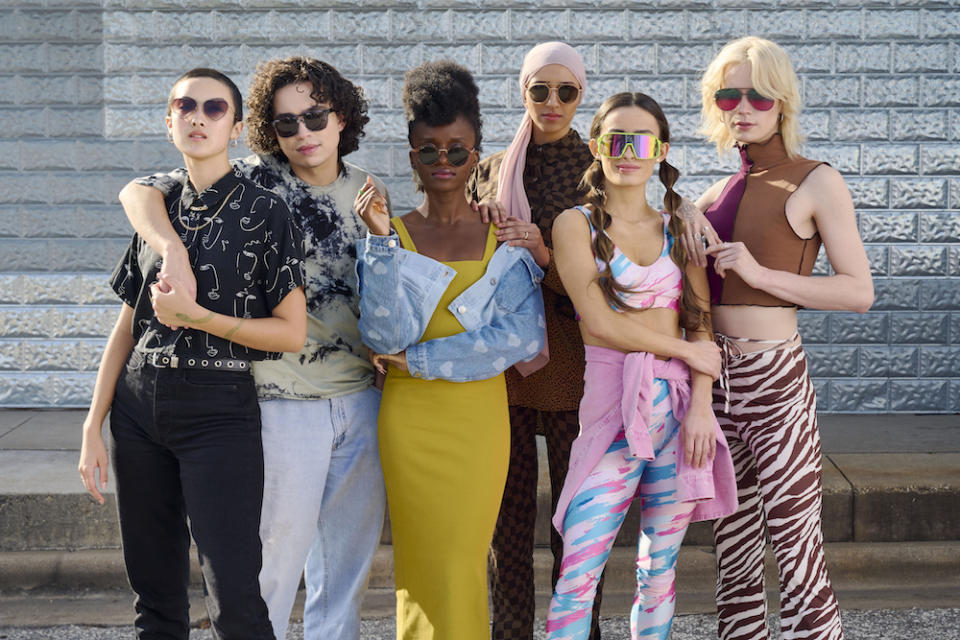How FGX International Approaches Product Development with a Sustainability Lens

Eyewear maker FGX International is on the path to convert its entire product array to sustainable materials by 2026.
Three years into this sustainability “journey,” the EssilorLuxottica subsidiary behind the Foster Grant brand and licensed glasses for labels such as Steve Madden, Frye and Dockers has been steadily growing its range of sustainable eyewear. In 2021, the company released 7 million pairs of glasses made of sustainable materials, and in 2024, this figure is expected to reach 40 million.
More from Sourcing Journal
“We call it a journey, because we’ve learned a long time ago, it’s going to continue over many, many years,” said Eric Rhea, vice president, R&D and sourcing at FGX International, during the “Eyewear Sees a Clear Path to Sustainability” panel at Sourcing Journal’s Sustainability Summit, moderated by Sourcing Journal managing and technology editor Jessica Binns. Rhea added, “It’s very complex…You open up one door, and it goes into another door and another door and another door, and you don’t know what you don’t know until you go there.”
Part of this complexity stems from eyewear’s multi-input composition; a simple pair might include upwards of five materials. To begin its pivot toward more sustainable products, FGX International had to research the materials available in the market to determine which inputs it wanted to use. Then, because the company doesn’t own its own factories, it had to find the right production partners that had the capabilities and certifications necessary to work with these inputs and meet its standards.
FGX’s sustainability strategy came with an initial production efficiency tradeoff. Giving an example, Rhea said that injection molding for conventional materials could produce 150 pieces per hour, but swapping out sustainable materials led this production rate to fall to about 70 pieces in an hour. After years of learning and testing, production rates have returned to their original levels, and the company is sharing its findings and working with partner chemical firms to spread knowledge through the entire supply chain to help it scale the use of these materials.
In addition to remodeling the eyewear itself, FGX International is also shifting the materials it uses in its packaging to lower its impact, such as incorporating recycled inputs or using potato starch in place of plastic. The company is also considering the end-of-life impact of packaging, including suggestions for consumers to find new uses for it—perhaps it turns into a cat toy or a pencil cup.

Matthew Coon, senior vice president, product design and development at FGX International, partly attributed his company’s quick progress on its goals to a “task force” that aligns organizational areas including finance, legal and accounting. This group meets on a weekly basis to discuss the targets and actions toward these goals. “We empowered that team to bring their solutions, their questions, their challenges, and empowered that team to make a decision,” he said.
Although eyewear is a fashion item, it is also functional, and sustainability cannot come at the expense of performance, Coon noted. He referred to this as “invisible” sustainability, which involves delivering lower impact products even if the consumer isn’t making purchase decisions primarily based on eco-friendliness.
“We are very proud of being accessible eyewear that anybody can afford, and as part of that, we are also very sensitive to people’s pocketbooks,” said Coon. “And they aren’t always willing to pay more for sustainability, especially if it negates something that they used to have in their eyewear.”

